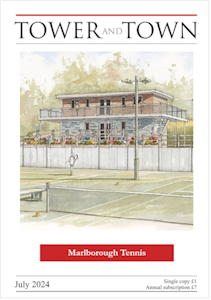

Tower and Town, July 2024 (view the full edition) (view the full edition)Nature Notes: The Fortunes Of Our MammalsAs June ends and July begins our birds enter a quieter phase after the main nesting season. Songbirds have all but lost their voices, the male Mallard and other duck species have gone into "eclipse plumage" and are flightless for a short period, and many adult birds are recovering from a hectic time brooding and feeding their young. But for some mammals the breeding season is in full swing. Hedgehogs for example usually give birth in June and July with an average hoglet litter size of four or five young. These much-loved creatures suffered a widespread loss in the first decade of this century and differences between urban and rural populations have become increasingly apparent. In urban areas, the picture is of a stable population that might be recovering, highlighting the importance of gardens, green spaces and local action. In stark contrast, rural populations remain low and, in the last two decades, have continued to decline by between a third and three-quarters nationally. Foxes have also undergone a decline in numbers (48% since 1995) but urban populations have been growing since the 1990's. It is estimated that 100,000 foxes are killed on UK roads every year. Badger road deaths make equally shocking statistics: c. 50,000 per annum, a fifth of the UK population.  Fallow deer, by David White There are at least six species of Deer on the British list- approximately 2 million in total in our countryside and semi-rural areas, the highest level for 1,000 years. Due to potentially negative impacts on wildlife and crops they are culled in some areas. In Wiltshire the Roe Deer is the most frequently encountered, often in small groups during the winter months. A slender, medium-sized deer, it has short antlers and no tail, mostly brown in colour, with a pale heart-shaped buff patch around the rump. The rut, or breeding season, occurs between mid-July and mid-August: after mating has occurred gestation is delayed until January of the next year, so that the young are not born during the harsh winter months. Two or three white-spotted kids emerge the following May or June. I was surprised to read that there are Red Deer in South Wiltshire. A stag is certainly an impressive sight in the highlands of Scotland but for me an early morning encounter with two or three shy Fallow Deer in Savernake Forest leaping across my path is as good as it gets. Elegant, soft brown with spotted markings, they soon vanish into the undergrowth and are gone. Robin Nelson |